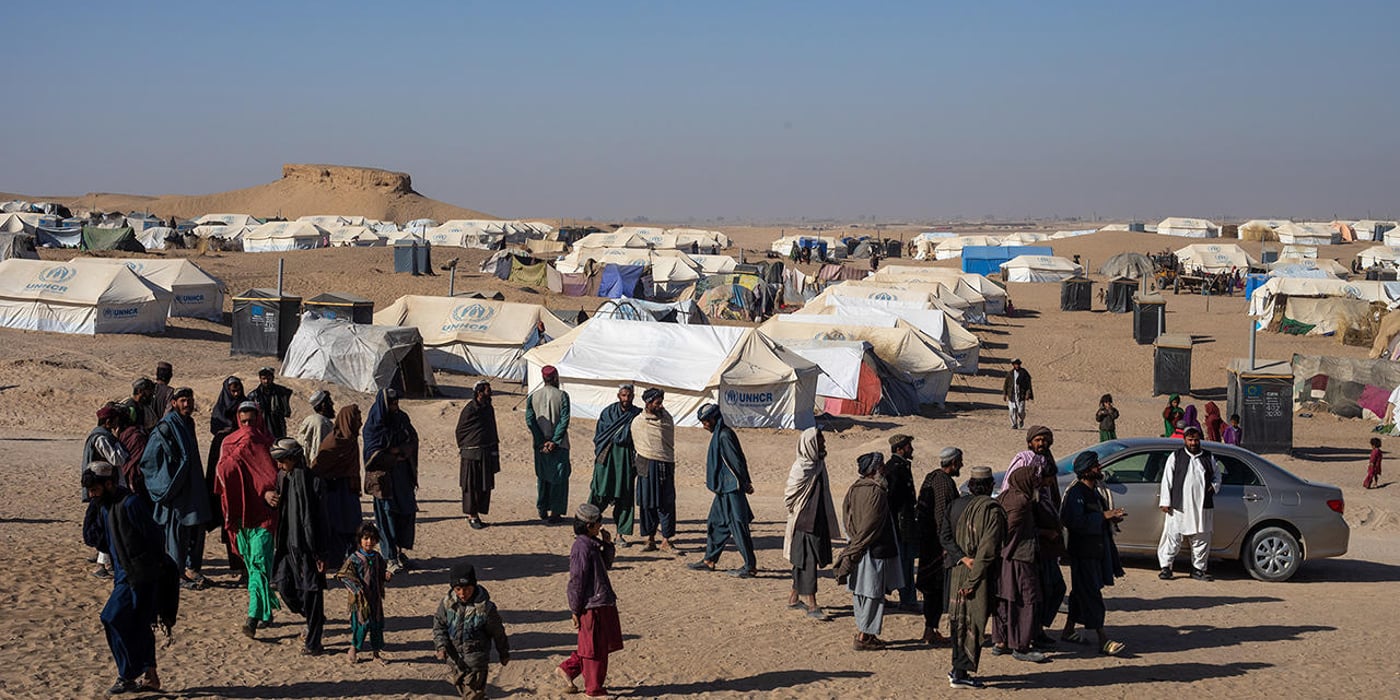
This article was first published by The Guardian.
Tens of thousands of panicked Afghans have made the dangerous journey to Kabul International Airport in the past two weeks hoping to evacuate. Crossing paths with families trying to flee, it felt surreal to be flying in rather than out.
For three days I sat stranded in a field hospital on the airport grounds, the crowds and chaos blocking any route into the city, the popping of guns blocking any notion of sleep.
I returned to Afghanistan to head up the Norwegian Refugee Council’s aid operation, where we have been providing assistance like education, food and shelter since 2003. Speaking with many of our 1,400 colleagues, it is clear Afghanistan’s humanitarian crisis stretches far beyond the perimeter of Kabul airport.
A perfect storm of conflict, drought and Covid has gripped the country.
Over half a million people have been forced to flee conflict since the start of the year. Another 5,000 civilians have been killed in escalated fighting since January. Millions have lost livelihoods due to conflict and an economy in freefall; many have taken on huge levels of debt just to pay for food and rent.
The World Bank warns the poverty rate could rise to over 70 per cent.
On top of this, Afghanistan is experiencing a devastating drought. Nearly one-third of the population face emergency levels of hunger and this is expected to increase in the months ahead. Exhausted families tell us they have sold their farmlands and moved to displacement camps just to survive.
Covid has further compounded the situation. The country has already gone through three substantial waves of the pandemic. With only 5 per cent of the population vaccinated, the World Health Organisation fears a new spike among displaced communities could spread quickly across cities. This would put further strain on a health system already struggling to cope escalating trauma and emergency cases brought on by the conflict.
First, all armed groups must exercise utmost restraint to protect the lives of civilians. Last week’s airport attack is a clear signal the conflict is not over. All parties have an obligation to protect civilians and civilian infrastructure. The violence targeting them must end.
Hospitals and schools must remain safe places.
Second, humanitarians need unimpeded access to all communities in need across Afghanistan. This means that when we restart our education programmes, both boys and girls must be able to participate. And it means that our staff, both male and female, must be able to move around freely to provide assistance.
Speaking with the Taliban is essential to making this happen. Neutrally engaging with conflict parties is standard practice for aid agencies that operate in places where non-state armed groups control territories home to communities in need. For example, in Somalia we speak with Al Shabaab. In Afghanistan, we have had contact with Taliban officials for years, and have been able to work in non-government controlled areas of the country as a result.
Our teams have already had a ‘knock on the door’ by the Taliban in many of the provinces where we operate. In all instances, we have been asked to continue our work. These assurances need to translate to unhindered access on the ground in the coming weeks and months ahead.
And finally, donor nations need to step up and fund humanitarian operations. Over 18 million people – half the population – rely on aid, and the number is growing. Despite this, Afghanistan’s aid appeal for 2021 is only 39 per cent funded 9 months into the year.
NATO countries who spent trillions of dollars on their discontinued military and political projects have a moral obligation to dig deep, and provide fast and flexible funding to the aid organisations helping the displaced women, men and children they left behind.
We are hoping to restart work over the coming weeks. This is a tough ask, especially of our dedicated Afghan colleagues who are under tremendous stress and feel uncertain about their safety and future. National staff make up the bulk of the country’s aid community and are essential for a decent humanitarian response to succeed. The commitment to those who are willing and able to continue supporting their fellow Afghans is commendable.
We also plan to get more international staff back into the country as soon as the security situation allows.
The Taliban’s rapid return to power has heavily impacted the entire population, driving up humanitarian needs and displacement. As the dust settles on Kabul airport, ordinary Afghans throughout the country are facing a more precarious future than ever. They cannot wait any longer for basic humanitarian aid.

